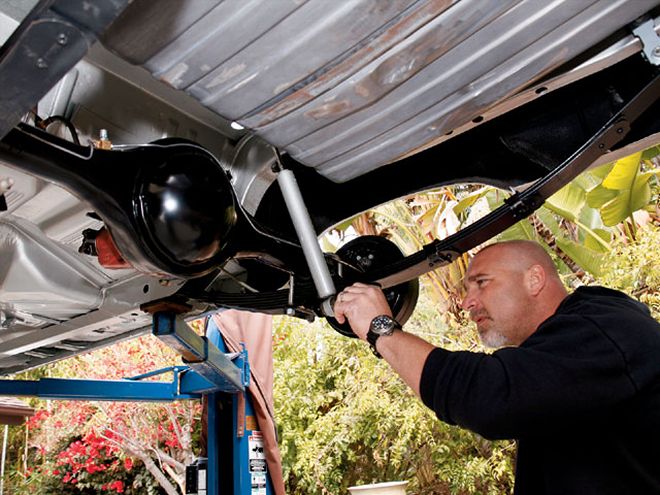

In 1965, when Chrysler initially built their A-990 Plymouths and Dodges, they only offered one rear axle-the 8 3/4. In 1966, the Dana 60 rearend became Chrysler's defacto standard for high-performance Mopars, but Chrysler continued to offer the 8 3/4. Today, many builders of cloned A-990 cars opt for the heavy-duty Dana rearend over the 8 3/4. There are several pros for the Dana, and they are all the same-it's as bulletproof as 15 layers of Kevlar. The cons in relation to the 8 3/4 are: The Dana is heaver, more costly, and changing gear ratios is a little less user friendly.
The 8 3/4 rearend is lighter, less costly to build, and with its drop-out center section, allows the owner to swap center sections within an hour. In comparison to the Dana, the 8 3/4 is lighter duty, but in contrast to the Ford 9-inch, the "world standard" for high-performance rearends, it's a virtual draw.
Chrysler's first installation of its 8 3/4 was in 1957, and the Sure Grip option was introduced in 1958. It was successfully used in Chrysler's full line of cars and Dodge trucks through 1974. During its life span, Chrysler used three different drop-out center section cases. The last one they used-known by the casting number 489-is the strongest and offers the larger pinion gear. The flexibility of the Chrysler 8 3/4 rearend allows a non-Sure Grip to be easily converted into a Sure Grip with the addition of a new Auburn unit.
In making a decision on the rearend for his A-990 clone, the owner, Bill Goldberg, considered the end use. Its primary use will be street driving, along with a few quarter-mile passes to get a baseline for its performance. If it were being built strictly for competition, Goldberg would have chosen the Dana. But with its intended street use, and giving a slight nod to the fact these cars originally used an 8 3/4, he chose the 8 3/4. The fact that original 8 3/4 housing was already hanging from the rear springs saved time and money. He removed it, and along with the backing plates, had it powdercoated in a semigloss black.
A local San Diego Mopar collector was the source for a 489 case. Goldberg looked at the several suppliers of rearend components and selected Strange Engineering for one-stop shopping for the heavy-duty components that fit inside the case and new axles. In line with being able to cruise at highway speeds, Goldberg selected 3.55 gears.
After a thorough cleaning and inspection of the 489 case, it went to Jerry Harder's Oceanside Driveline for assembly.
With the center section fully assembled, Goldberg dropped it into the powdercoated housing. The Strange axles were slid in, and the entire assembly bolted to a set of Super Stock rear springs. The original A-990 cars featured a 1-inch shorter wheelbase by moving the rear axle forward on the springs. For aesthetics, he opted to leave the rear axle in its standard location, which centers the rear wheel in the wheel opening. If it were a race car, he would have taken advantage of the relocated rear axle and dealt with the off-center look of the rear wheels. An adjustable pinion snubber will be added to the top of the 8 3/4 case.
The fully rebuilt rearend with the complete complement of heavy-duty Strange components should give Goldberg miles of driving pleasure with the confidence that it will hold together under full-throttle blasts.
Help Your Rear Survive
Here's a couple of tips you can use to ensure your newly built rearend has a long and happy life.